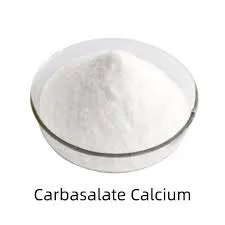- Afrikaans
- Albanian
- Amharic
- Arabic
- Armenian
- Azerbaijani
- Basque
- Belarusian
- Bengali
- Bosnian
- Bulgarian
- Catalan
- Cebuano
- Corsican
- Croatian
- Czech
- Danish
- Dutch
- English
- Esperanto
- Estonian
- Finnish
- French
- Frisian
- Galician
- Georgian
- German
- Greek
- Gujarati
- Haitian Creole
- hausa
- hawaiian
- Hebrew
- Hindi
- Miao
- Hungarian
- Icelandic
- igbo
- Indonesian
- irish
- Italian
- Japanese
- Javanese
- Kannada
- kazakh
- Khmer
- Rwandese
- Korean
- Kurdish
- Kyrgyz
- Lao
- Latin
- Latvian
- Lithuanian
- Luxembourgish
- Macedonian
- Malgashi
- Malay
- Malayalam
- Maltese
- Maori
- Marathi
- Mongolian
- Myanmar
- Nepali
- Norwegian
- Norwegian
- Occitan
- Pashto
- Persian
- Polish
- Portuguese
- Punjabi
- Romanian
- Russian
- Samoan
- Scottish Gaelic
- Serbian
- Sesotho
- Shona
- Sindhi
- Sinhala
- Slovak
- Slovenian
- Somali
- Spanish
- Sundanese
- Swahili
- Swedish
- Tagalog
- Tajik
- Tamil
- Tatar
- Telugu
- Thai
- Turkish
- Turkmen
- Ukrainian
- Urdu
- Uighur
- Uzbek
- Vietnamese
- Welsh
- Bantu
- Yiddish
- Yoruba
- Zulu
ធ្នូ . 11, 2024 18:25 Back to list
Colistin Sulfate Salt Applications and Importance in Modern Medicine and Agriculture
Colistin Sulfate Salt An Overview
Colistin sulfate salt, a form of the polypeptide antibiotic colistin, has garnered significant attention in recent years due to its role in treating multidrug-resistant Gram-negative bacterial infections. Originally derived from the bacterium *Bacillus polymyxa*, colistin is part of a class of antibiotics known as polymyxins, which have a unique mechanism of action that disrupts bacterial cell membranes. This article delves into the significance, application, and challenges associated with colistin sulfate salt.
History and Development
Colistin was first identified in the 1940s and was widely used in clinical settings until the emergence of more effective antibiotics led to its fall out of favor. However, as antibiotic resistance has surged globally, particularly among pathogens such as *Escherichia coli*, *Klebsiella pneumoniae*, and *Pseudomonas aeruginosa*, colistin has resurfaced as a critical treatment option for severe infections where other antibiotics fail.
Colistin sulfate salt, specifically, is used primarily in veterinary medicine, particularly as a feed additive for livestock, to prevent infections and promote growth. This use, while beneficial in agricultural contexts, has raised concerns about the development of resistant bacteria, making the careful stewardship of colistin necessary in both human and veterinary medicine.
Mechanism of Action
The primary action of colistin sulfate salt involves binding to the lipopolysaccharides and phospholipids in the bacterial cell membrane, resulting in increased permeability and ultimately cell death. This mechanism is particularly effective against Gram-negative bacteria, which are characterized by their outer membrane structure that can protect them from many antibiotics. However, this unique action also raises the potential for toxicity, primarily nephrotoxicity and neurotoxicity. Understanding these risks is crucial for clinicians when considering colistin as a treatment option.
Clinical Uses and Reemergence
colistin sulfate salt

As antibiotic resistance has developed, colistin has become an essential drug in treating infections caused by resistant bacteria. It is often reserved as a last-resort antibiotic due to its potential side effects. In hospitals, colistin is typically administered intravenously for serious infections, while the oral form of colistin sulfate is utilized primarily for gastrointestinal infections.
The reemergence of colistin has led to substantial research focusing on its pharmacodynamics, pharmacokinetics, and safety profile. Clinicians now utilize colistin in combination with other antibiotics in some cases, which may enhance efficacy and reduce the likelihood of resistance developing.
Challenges and Resistance
Despite its critical role, the rising incidence of colistin-resistant organisms poses a significant challenge in the fight against multidrug-resistant infections. The mcr-1 gene, which confers resistance to colistin, has been identified in various bacterial strains globally and has raised alarms in the medical community regarding the future efficacy of this antibiotic.
The use of colistin in agriculture has been cited as a contributing factor to the spread of resistant bacteria, leading to calls for stricter regulations on its use in livestock. Limiting colistin's use in veterinary medicine may be imperative to prevent further resistance development.
Conclusion
Colistin sulfate salt represents a crucial weapon in the battle against resistant bacterial infections, especially in healthcare settings. While its historical significance as an antibiotic has been profoundly challenged by emerging resistance, concerted efforts in stewardship, research, and updated clinical guidelines are essential to ensure its effective use. The balance between leveraging colistin’s benefits for treating severe infections and mitigating its potential risks is essential for sustaining its efficacy in the future. Continued vigilance in monitoring resistance patterns and responsible usage across both human and veterinary medicine will be vital to preserving the utility of colistin sulfate salt as a last-resort option in combating multidrug-resistant pathogens.
-
Guide to Oxytetracycline Injection
NewsMar.27,2025
-
Guide to Colistin Sulphate
NewsMar.27,2025
-
Gentamicin Sulfate: Uses, Price, And Key Information
NewsMar.27,2025
-
Enrofloxacin Injection: Uses, Price, And Supplier Information
NewsMar.27,2025
-
Dexamethasone Sodium Phosphate Injection: Uses, Price, And Key Information
NewsMar.27,2025
-
Albendazole Tablet: Uses, Dosage, Cost, And Key Information
NewsMar.27,2025













